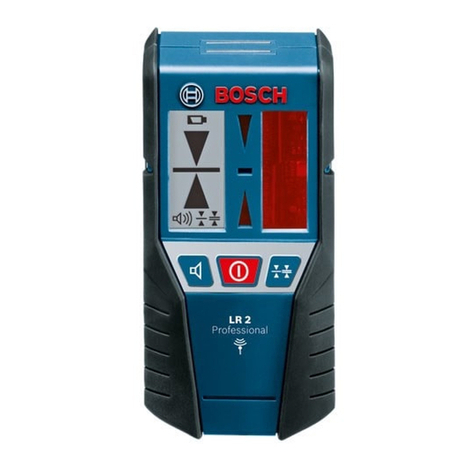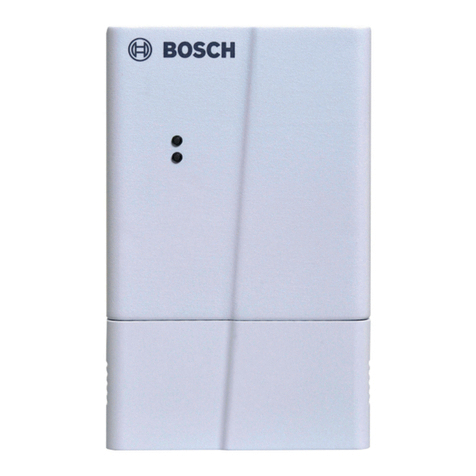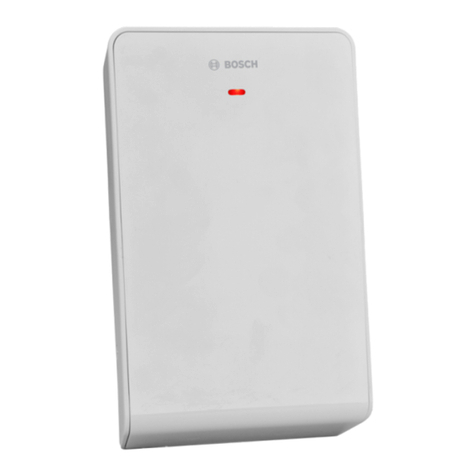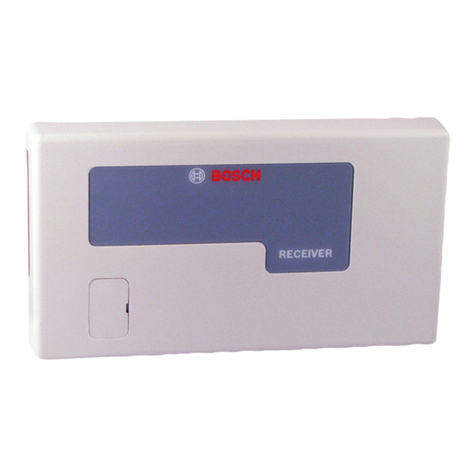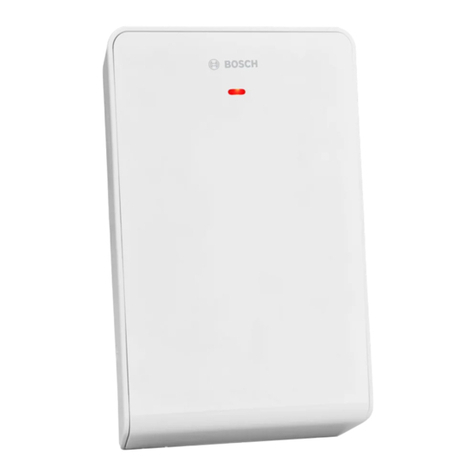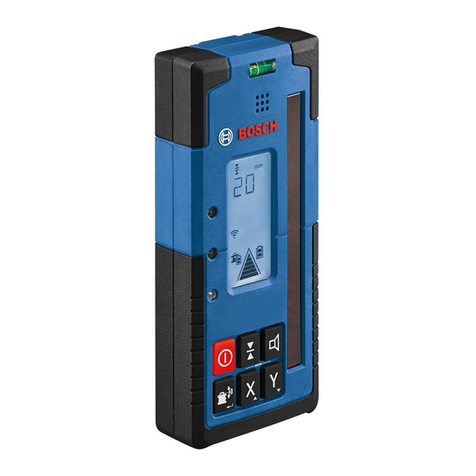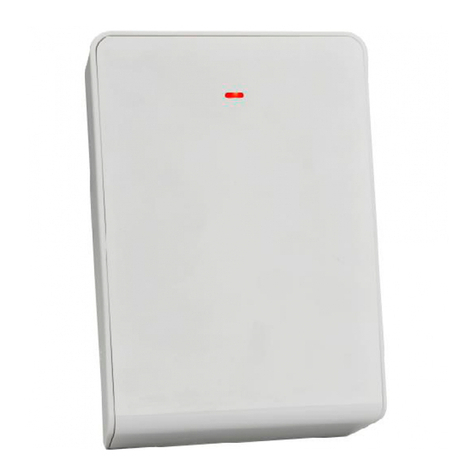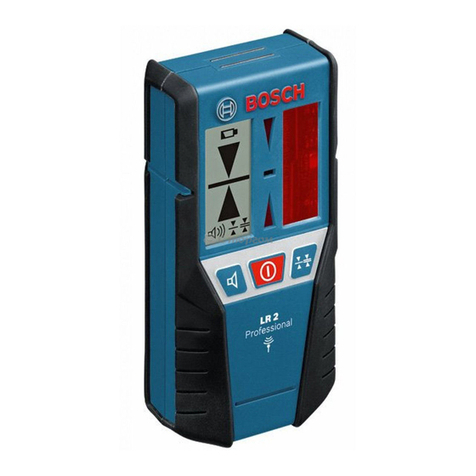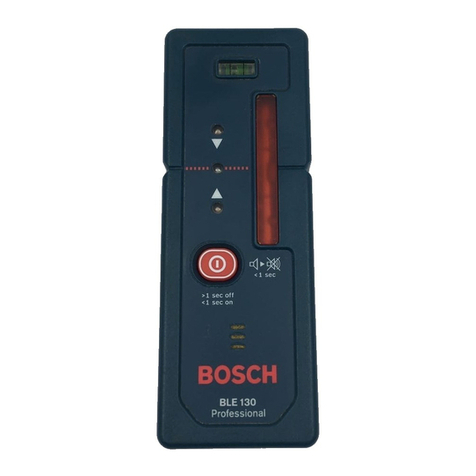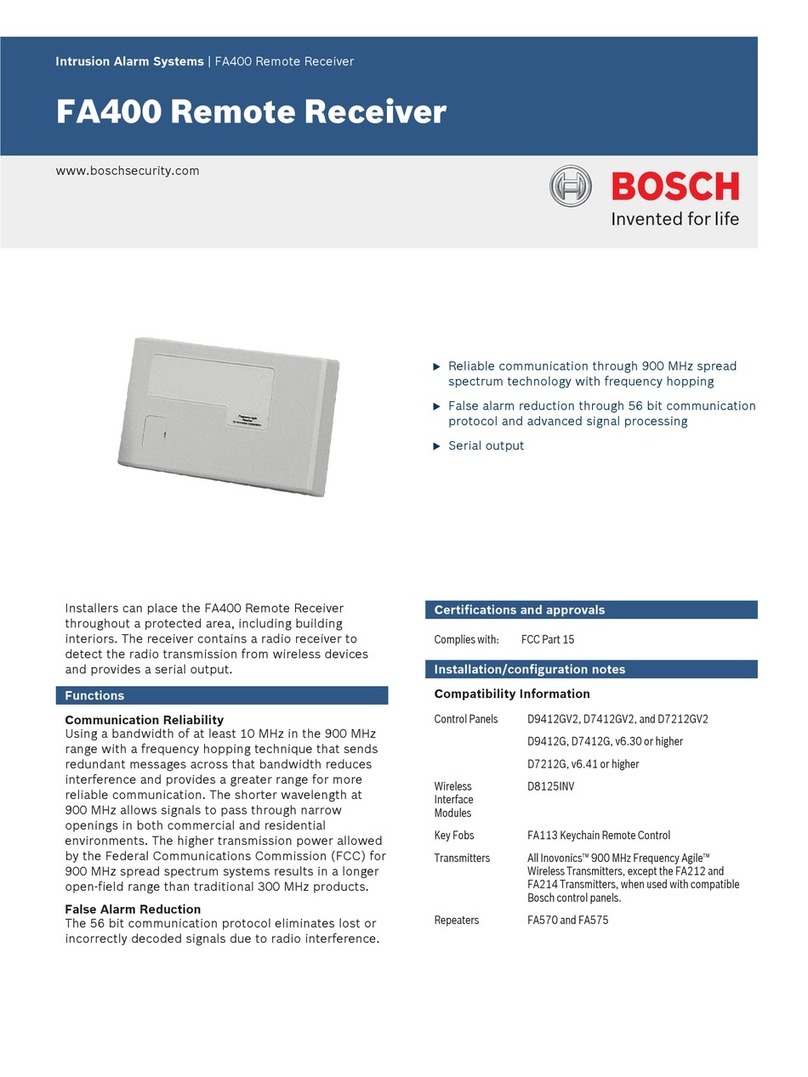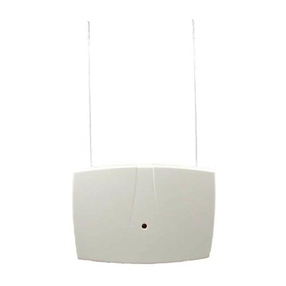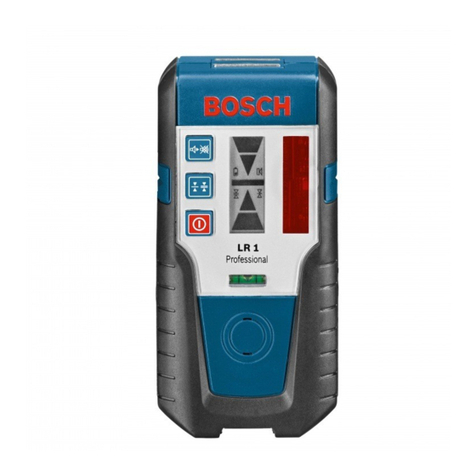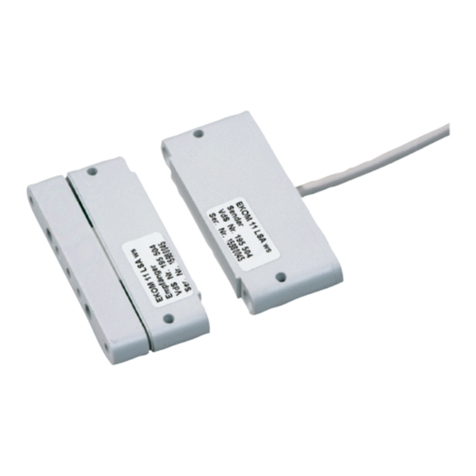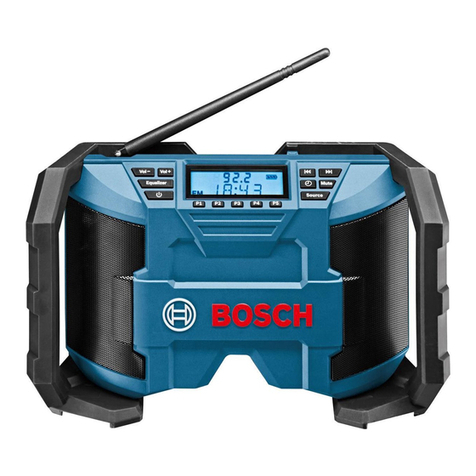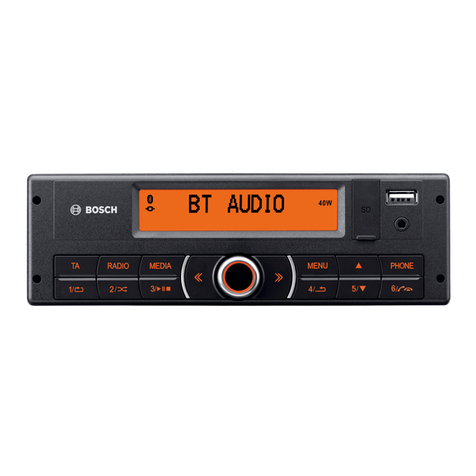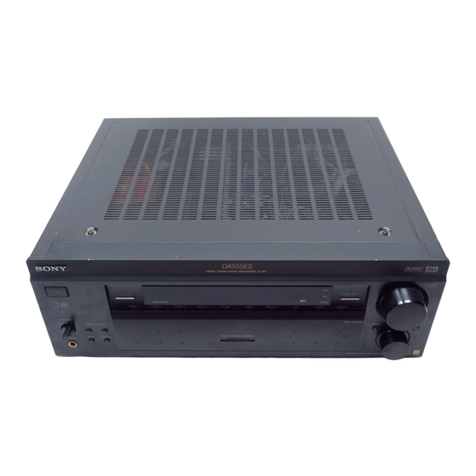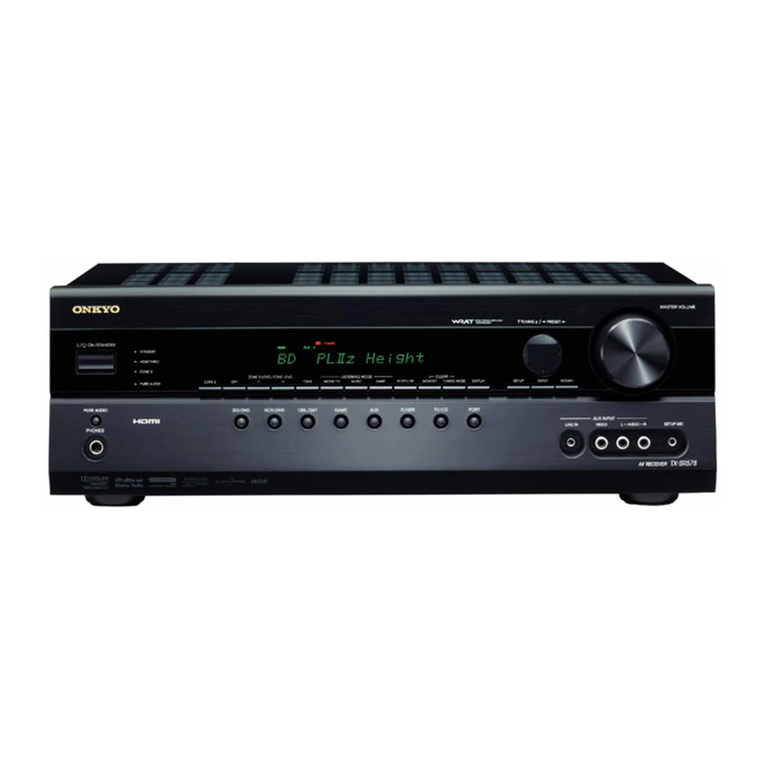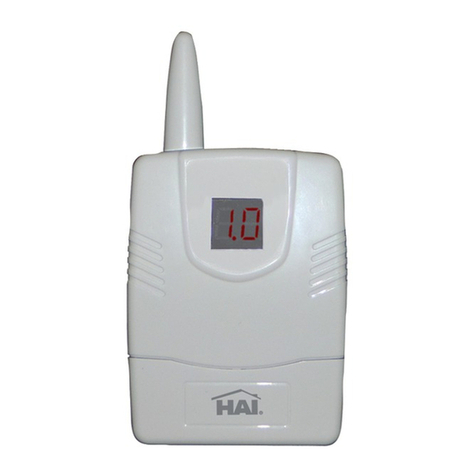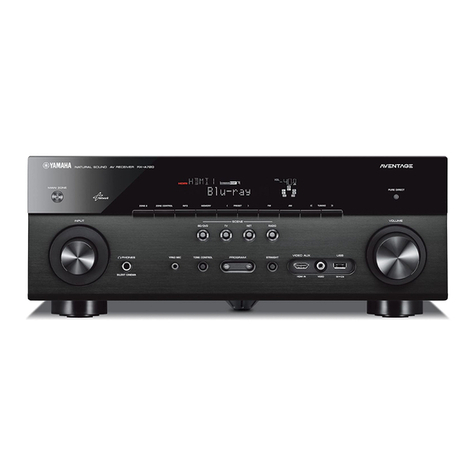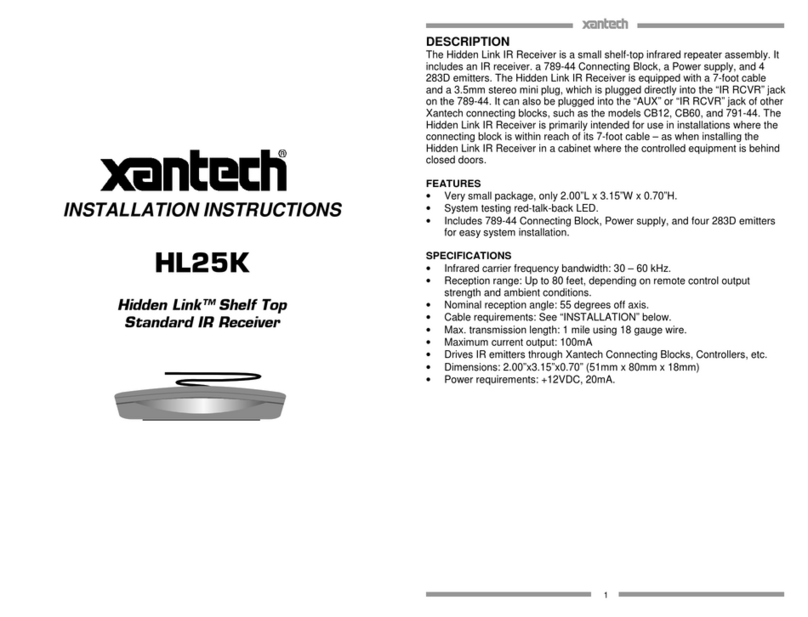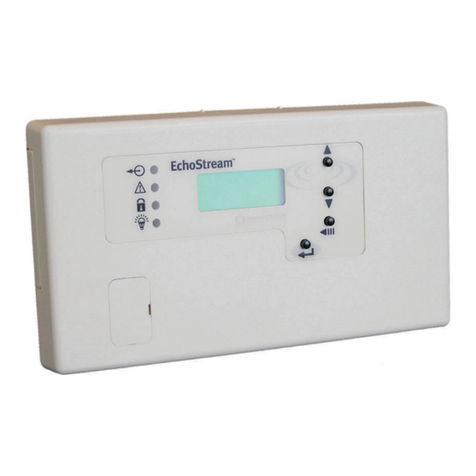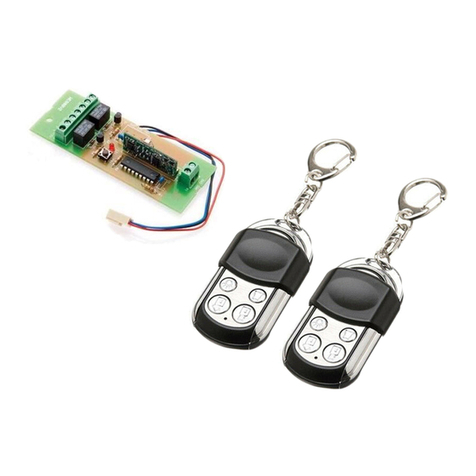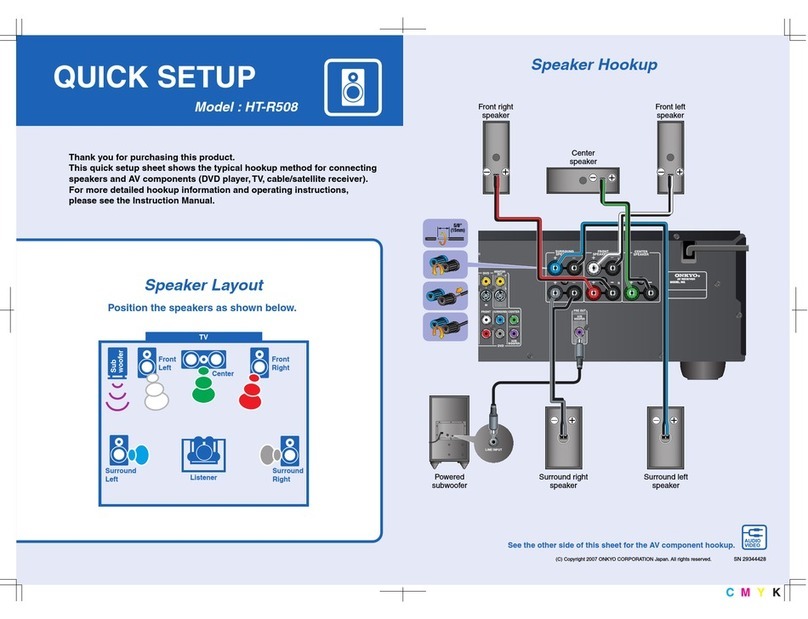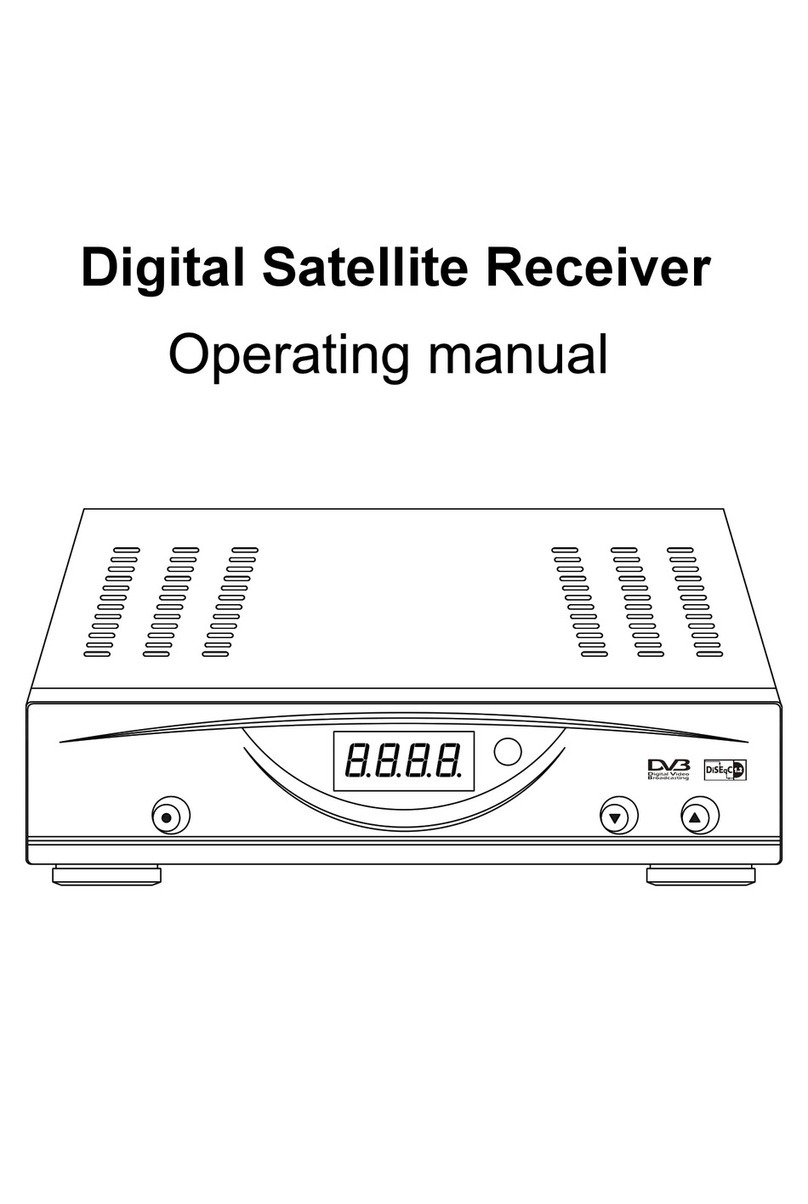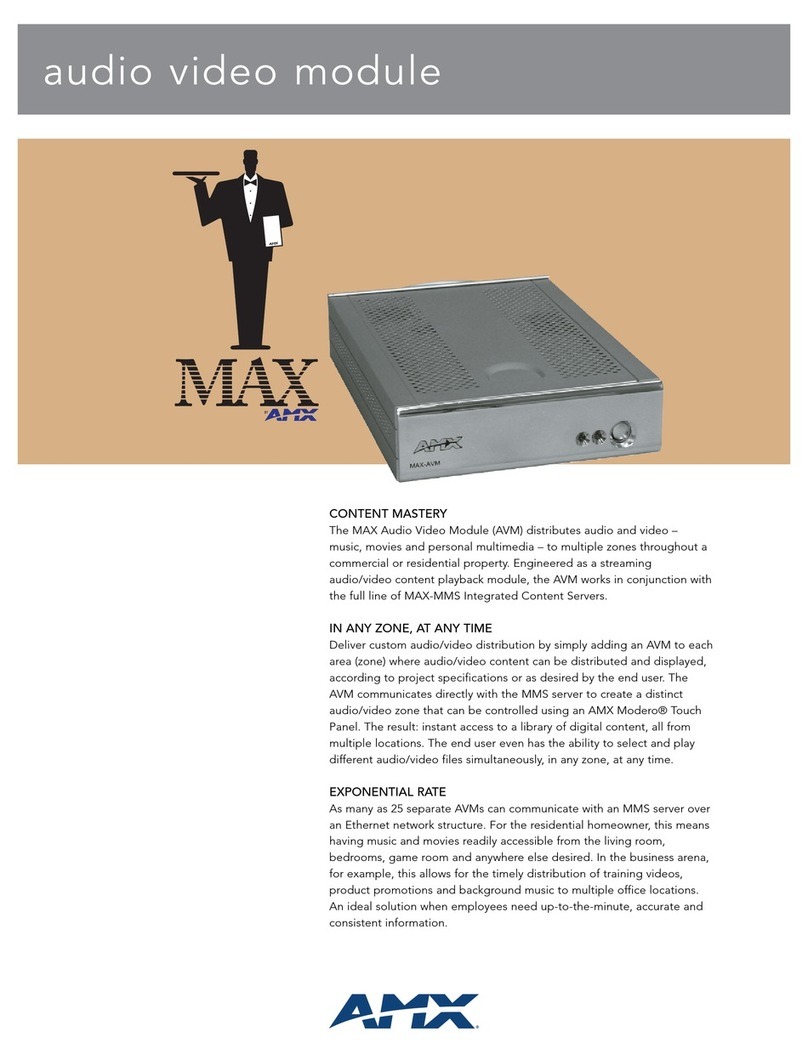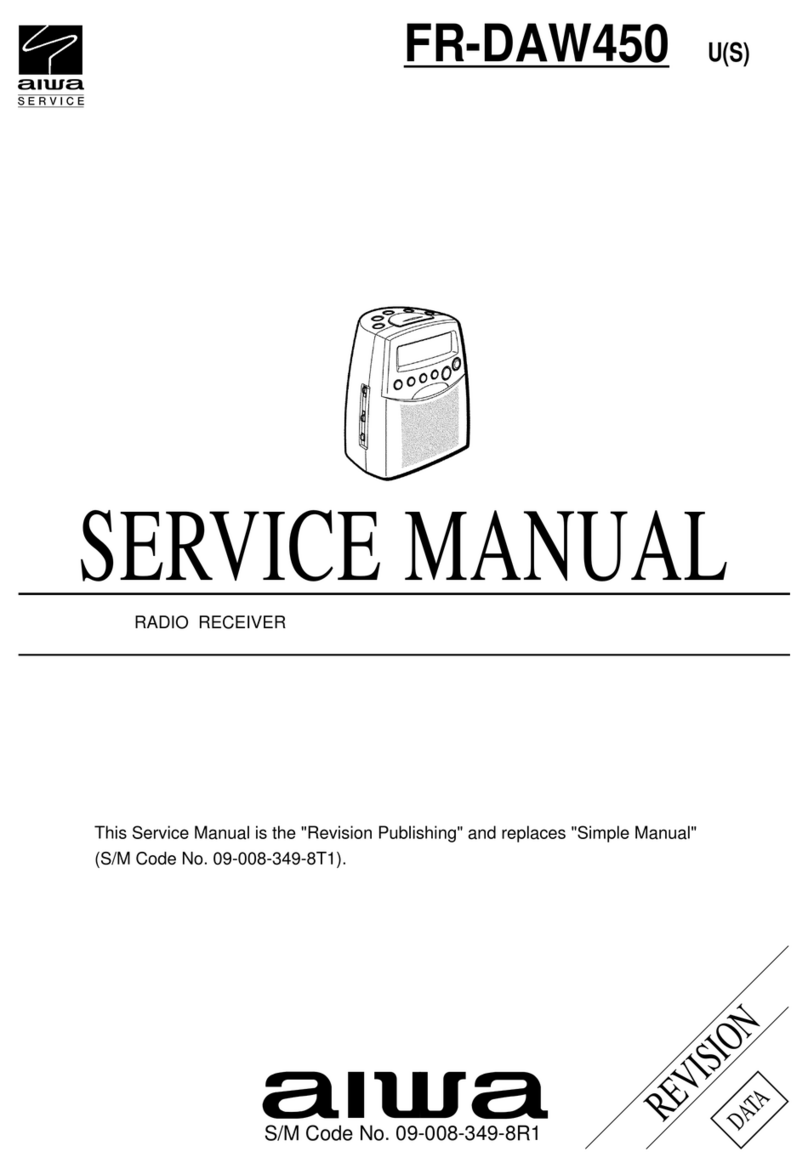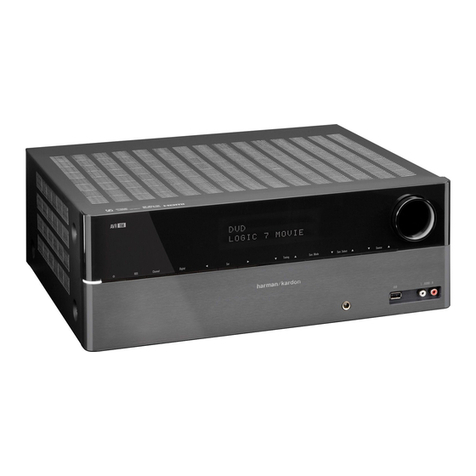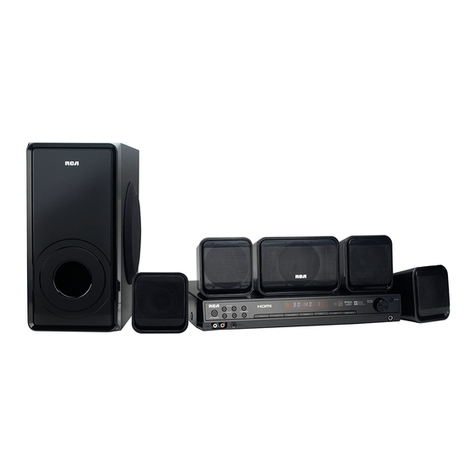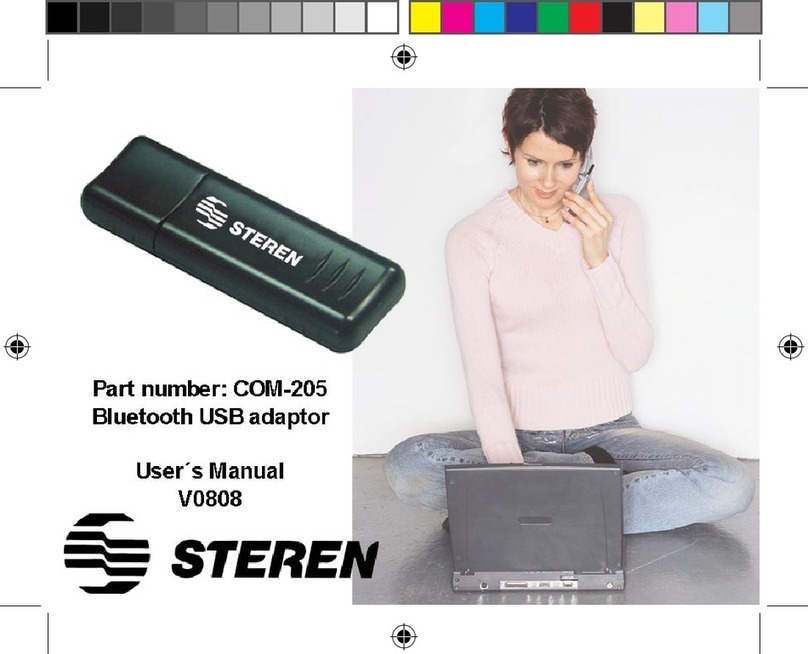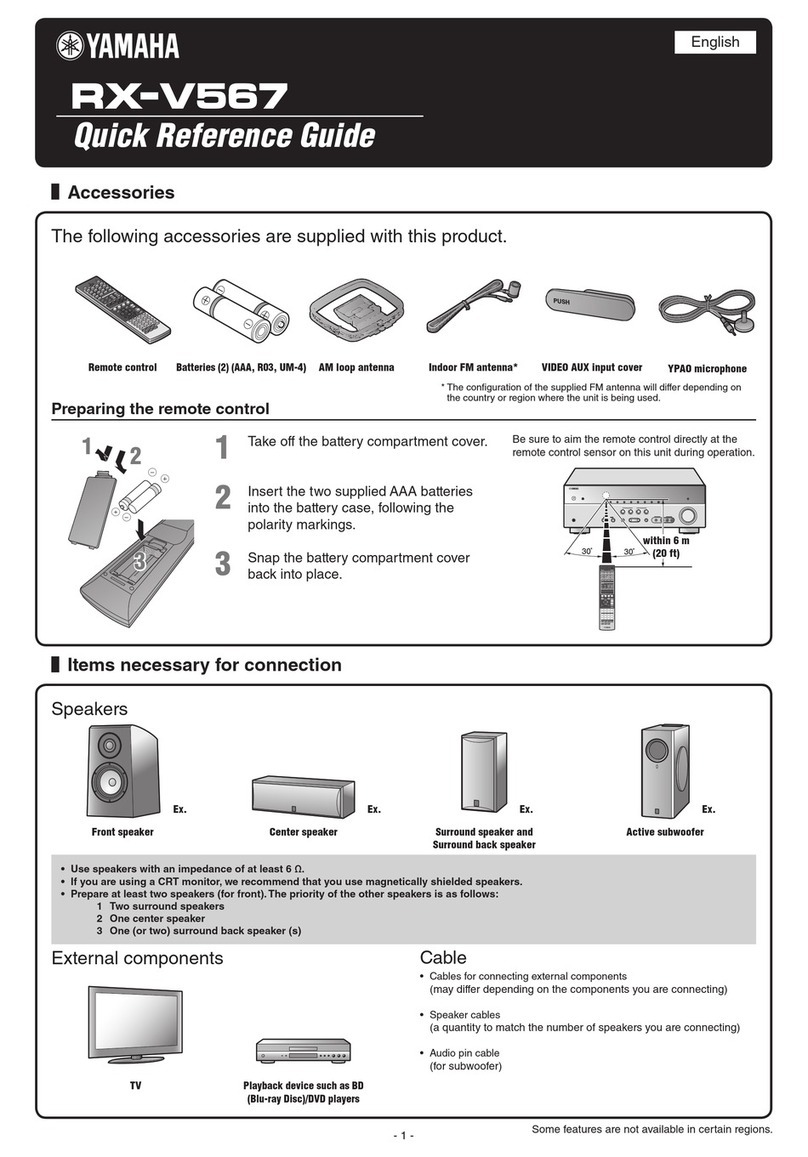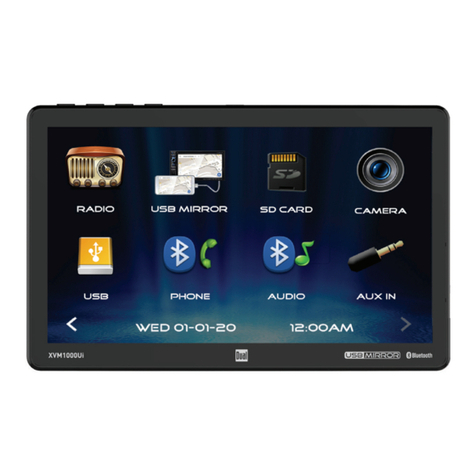
©2009 Bosch Security Systems, Inc. ISW-EN4216R Installation Guide 4/09 | F01U126806-01 | 3
4.2 INSTALL & SERVICE Submenu
1. From the Main Menu, press ENTER to select the INSTALL &
SERVICE submenu.
2. Enter the password.
A numeric password is required to access the
INSTALL & SERVICE submenu. The default password is 3446.
3. Press UP or DOWN to scroll through the menu options. Press
ENTER to select a menu option.
4.2.1 Program Output
1. From the INSTALL & SERVICE submenu, select
PROGRAM OUTPUT.
2. Scroll through the list of available outputs (01 ñ 06), and press
ENTER to select the desired output.
3. Scroll through the list of available options.
Refer to Table 4 for descriptions of the options.
4. Press ENTER to select an option.
The display shows the PGM DONE message to indicate that the
output is now programmed. To program another output, press
ENTER. To return to the INSTALL & SERVICE submenu, press
ENTER and then BACK.
Table 4: Program Output Options
Option Description
Toggle The output changes state each time the device
sends a new activation. At least 5 sec must pass
before the output can send a new activation.
To prevent output noise, set the inactive time
between 2.0 sec and 99.5 sec (increments of
0.5 sec). The default is 4.0 sec.
Momentary The output turns on for the programmed
duration, and then turns off regardless of the
device status.
Set the time that the output remains active
between 0.5 sec and 99.5 sec (increments of
0.5 sec). The default is 4.0 sec.
Follower The output follows the transmitterís alarm
status.
Latching The output turns on when activated and remains
on until the receiver is reset.
4.2.2 Change Password
1. From the INSTALL & SERVICE submenu, select
CHANGE PASSWORD.
2. Enter a new numeric password up to eight digits in length.
To select a blank space, press ENTER without selecting a digit.
3. When finished, press ENTER to complete the selection.
When the PASSWORD CHANGED message appears, press
ENTER to return to the INSTALL & SERVICE submenu.
4.2.3 Monitor Signal Strength
Use the signal strength option to measure signal strength and
troubleshoot installation problems.
1. From the INSTALL & SERVICE submenu, select
SIGNAL STRENGTH.
The LCD display shows Point 1 and its current signal quality
(GOOD, WEAK, or NO SIG).
2. Press UP or DOWN to scroll through the registered
transmitters.
3. Press ENTER again to view Level (LV) or Margin (MA).
- Level: Indicates the overall signal strength.
- Margin: Indicates the signal strength minus the
background noise.
4. To reset signal data, press UP or DOWN to exit and return to
the transmitter currently selected.
4.2.4 Setup Point
When programming points, ensure that you do not
map faults to the same output as alarms.
1. From the INSTALL & SERVICE submenu, select SETUP POINT.
2. Press UP or DOWN to scroll through the available points (1-16).
3. Press ENTER to select a point.
- TX REGISTRíD: This message appears if a transmitter is
currently registered to the selected point.
- TX NOT REGISTRíD: This message appears if no
transmitter is registered to the selected point.
4. Press ENTER to program the selected point.
5. Press UP or DOWN to scroll through the programming options.
Refer to Table 5 for descriptions of the options.
6. Press ENTER to select an option for the point being
programmed.
Selecting -- disables the selected option.
Table 5: Setup Point Options
Option Description
SPV TIME Set the supervision time limit between 1 min
and 99 hr to report missing transmitters.
Select 00 to disable supervision time. The
default is 60 min.
IMPORTANT: Disabling supervision time is not
recommended.
INACTIVE OUT Map the device to the Inactivity Fault output.
TAMPER OUT Map the device to the Tamper Fault output.
LOW BATT
OUT
Map the device to the Low Battery Fault
output.
ALARM OUT Map the transmitter to the Alarm output.
AC LOSS OUT Map the repeater to the AC Loss output.
LOG ALWAYS Select whether to log events for this device at
all times or only when armed.
IMPORTANT: The log armed option logs events
only when a low is applied at the Arm Input
terminal.
TEXT Enter up to eight characters of descriptive text
for the transmitter/repeater.
-Press UP or DOWN to scroll through the
available alphanumeric characters.
-Press ENTER to select a character and
advance to the next space.
-To select a blank space, press ENTER
without selecting a character.
IMPORTANT: If you do not use all eight
characters, you must enter blank spaces at the
end of the line.
7. After making the programming selections, press ENTER again to
complete the programming.





